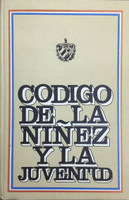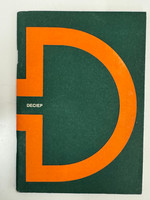- Travel
-
Exhibits
- La Portada Cubana
- Immortal Cuba: Artists Take on Their Heroes
- Seattle Poster Exhibit
- Sandra Dooley & Alejandrina Cué
- The Art of Wayacón
- Cuban Folk Art
- Cuba In Black And White
- 25 Years of Cuban Art Space
- Summer Folk Art Expo
- ¡SPRING AWAKENING FROM CUBA!
- Celebrating The Art Of Cuban Women
- Celebrating Paper, Affordable Art from Cuba
- Art of the Revolution
- Outsider Art
- Lost and Found
- En la lucha: Celebrating Cuban Women and Their Art
- Cuban Art Stash
- 100 Fires: 5 Cienfuegos Artists' Work on Paper
- Waya + Monte! Magic Realism in Cienfuegos
- Viva Cuba Viva! Poster Show
- Cultivando Sueños
- Black Lives Matter in Cuba Jan 9-March 27
- Leandro Soto: Crónicas visuales
- Cuban Canvas
-
Archive
- Global Reflection 2018: Spirit and Community
- Exhibit in the cloud: Contemporary Works on Paper
- MADE IN CUBA! MINNEAPOLIS EXHIBIT
- Cuban Posters and Photography from CCS collection
- AUTUMN SALE! Sept/Oct 2017
- SPRING ARTS AND CRAFT SALE
- Vuelo Directo/Non Stop: Alberto & Alejandro Lescay
- The Many Faces of Fidel
- Somos
- Made in Cuba!
- The US empire in Cuban graphics
- Made in Cuba/Seattle exhibit
- Entre Nos
- Looking Back
- Cuban Art Space
- Membership/Donate
- About Us
- Cuba News
-
The strikingly minimalist cover design features a bold geometric composition in maroon and light blue—a large stylized "D" formed by curved and angular shapes dominates the burgundy cover, with the acronym "DECIEP" positioned in white lettering within the negative space. The back cover continues the geometric theme with horizontal stripes alternating between the same maroon and sky blue colors, creating a rhythmic visual pattern. This modernist design aesthetic reflects the journal's academic mission while maintaining the clean, functional sensibility characteristic of Cuban revolutionary graphic design in the 1970s.
DECIEP (Departamento de Ciencias de la Información de la Escuela de Periodismo) was a bimonthly publication of the Department of Information Sciences at the University of Havana's School of Journalism. The editorial board included prominent Cuban intellectuals and designers: Miriam Rodríguez Bethencourt, Arnaldo Morales Capó, Félix Beltrán (one of Cuba's most celebrated graphic designers), José Rodríguez Méndez, Pedro Rodríguez García, and Oria de Castro. Published at the "Camilo Cienfuegos" Workshops of the DOR (Departamento de Orientación Revolucionaria) of the Central Committee of the Communist Party of Cuba, the journal served as a platform for critical media analysis, journalism theory, and revolutionary communication studies.
This July-August 1973 issue holds particular historical significance, appearing just weeks before the September 11, 1973 military coup in Chile that overthrew President Salvador Allende. The table of contents reflects this urgent moment: lead articles include "El Fascismo en Chile no Vencerá" (Fascism in Chile Will Not Win) and "Augusto Olivares, un Periodista Revolucionario" (about Allende's press secretary who died defending La Moneda palace during the coup). Other content includes media criticism such as "El Strip Tease de la Política" and critical analyses of U.S. cultural imperialism with articles about Sesame Street. The issue also features "Un Maestro del Cartel" (A Master of Posters), likely discussing Cuban graphic design. The journal's editorial note emphasizes that published works do not necessarily represent DECIEP's official position, reserving the right to include clarifying notes or special articles when necessary, while authorizing reproduction of articles with proper source attribution.
-
-
Discover More at the Center for Cuban Studies







